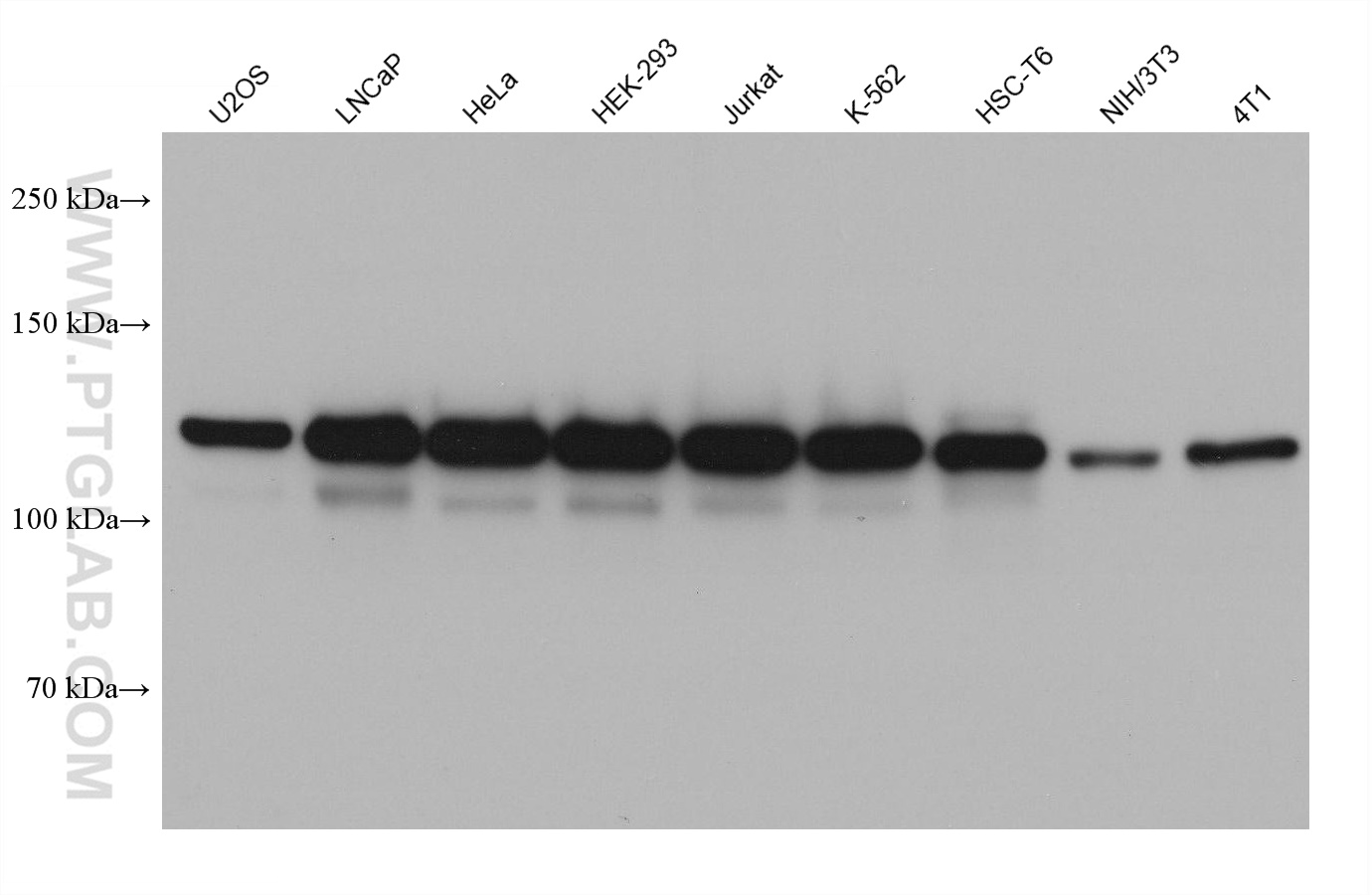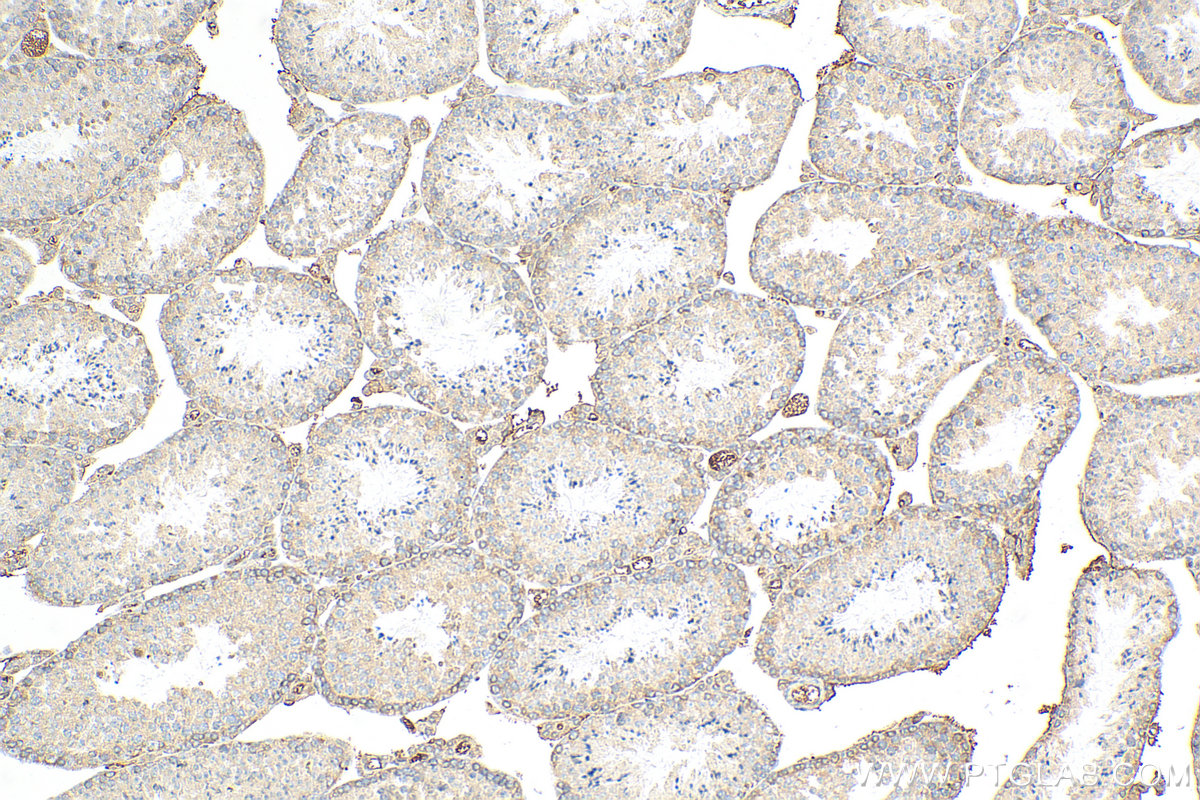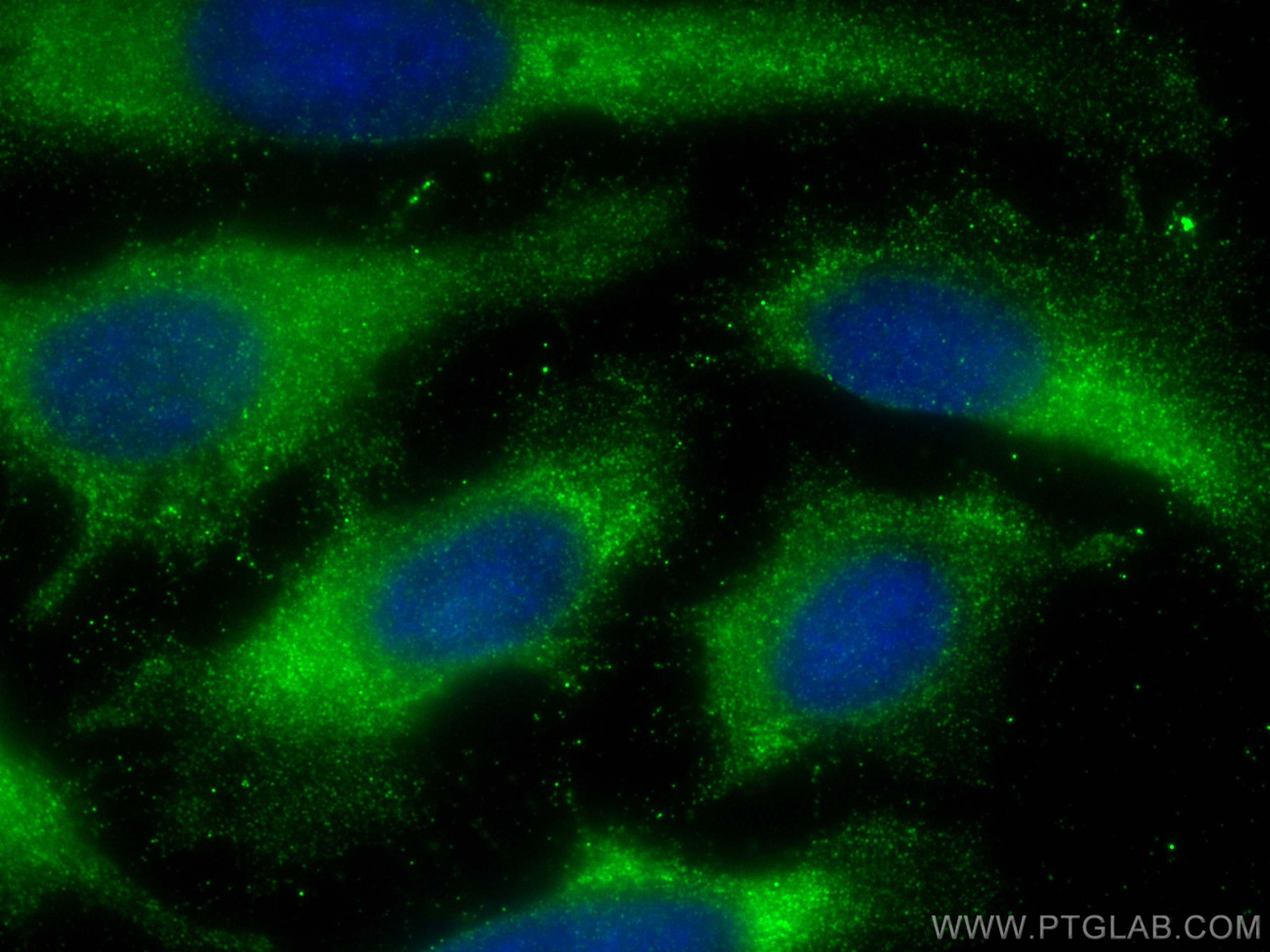验证数据展示
产品信息
68334-1-PBS targets CC2D1A in WB, IHC, IF/ICC, Indirect ELISA applications and shows reactivity with human, mouse, rat samples.
| 经测试应用 | WB, IHC, IF/ICC, Indirect ELISA Application Description |
| 经测试反应性 | human, mouse, rat |
| 免疫原 |
CatNo: Ag10363 Product name: Recombinant human CC2D1A protein Source: e coli.-derived, PET28a Tag: 6*His Domain: 1-351 aa of BC064981 Sequence: MHKRKGPPGPPGRGAAAARQLGLLVDLSPDGLMIPEDGANDEELEAEFLALVGGQPPALEKLKGKGPLPMEAIEKMASLCMRDPDEDEEEGTDEDDLEADDDLLAELNEVLGEEQKASETPPPVAQPKPEAPHPGLETTLQERLALYQTAIESARQAGDSAKMRRYDRGLKTLENLLASIRKGNAIDEADIPPPVAIGKGPASTPTYSPAPTQPAPRIASAPEPRVTLEGPSATAPASSPGLAKPQMPPGPCSPGPLAQLQSRQRDYKLAALHAKQQGDTTAAARHFRVAKSFDAVLEALSRGEPVDLSCLPPPPDQLPPDPPSPPSQPPTPATAPSTTEVPPPPRTLLEA 种属同源性预测 |
| 宿主/亚型 | Mouse / IgG1 |
| 抗体类别 | Monoclonal |
| 产品类型 | Antibody |
| 全称 | coiled-coil and C2 domain containing 1A |
| 别名 | FREUD 1, AKI1, Akt kinase-interacting protein 1, Coiled-coil and C2 domain-containing protein 1A, Five prime repressor element under dual repression-binding protein 1 |
| 计算分子量 | 951 aa, 104 kDa |
| 观测分子量 | 130 kDa |
| GenBank蛋白编号 | BC064981 |
| 基因名称 | CC2D1A |
| Gene ID (NCBI) | 54862 |
| 偶联类型 | Unconjugated |
| 形式 | Liquid |
| 纯化方式 | Protein G purification |
| UNIPROT ID | Q6P1N0 |
| 储存缓冲液 | PBS only, pH 7.3. |
| 储存条件 | Store at -80°C. The product is shipped with ice packs. Upon receipt, store it immediately at -80°C |
背景介绍
CC2D1A (coiled-coil and C2 domain-containing 1A), also known as Freud-1, Aki1 or TAPE (TBK1-associated protein in endolysosomes), is a evolutionary conserved protein located in different subcellular compartments, including the nucleus, centrosome, and endolysosomes. It acts as a scaffold protein that interacts with various proteins and plays diverse biological roles. Mutations in CC2D1A have been linked to nonsyndromic mental retardation (NMSR) and generate a truncated 85-kDa product. Several isoforms of CC2D1A proteins have also been described: 120 /130-kDa doublet of long isoform and 67 kDa short isoform. The short isoform of CC2D1A has been identified as the predominant isoform in rodent cells, while the long isoform is more abundant in human cells. Recently it has been reported that CC2D1A/TAPE is the first innate immune regulator implicated in both TLR and RLR signaling at a very early step.





